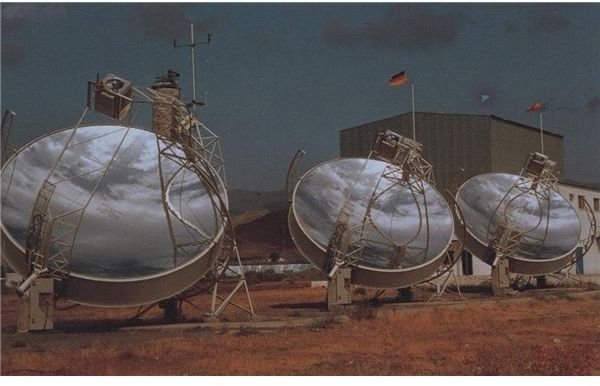Using Stirling Engines to Recover Waste Heat from Industries
Stirling engines were first invented in 1816, the heyday of the steam machine. They run on a thermodynamic cycle, converting heat to mechanical energy. The unique benefits of Stirling engines have long provoked discussion of the possibilities they present. Stirling engines run very quietly and also very efficiently. In contrast to internal combustion engines, which are loud and only achieve efficiencies of around 18%, Stirling engines are capable of efficiencies of up to 40%.
These advantages, as well as the fact that Stirling engines can run on almost any heat source, led Stirling engines to reach the height of their popularity in the 1860s, when they were used as motors in homes. As electric motors became more prominent, however, use of Stirling engines began to fade out, disappearing almost completely by the 1930s. Stirling engines have several aspects that made them progressively less attractive as other technologies improved. One, the engines require fairly high temperatures to operate efficiently. These temperatures are higher than typical factory waste heat temperatures. Since a primary purpose of using Stirling engines would be to capture waste heat from industry, this limits their effectiveness. Secondly, the engines are very large for the amount of energy they produce. This is due to limitations on heat transfer, which powers the device, imposed by heat transfer coefficients of the working gas.
The Stirling Engine Revival
Though Stirling engines’ power limitations sidelined them for the better part of a century, new technology breakthroughs and changing requirements have led to a boom time for Stirling engines. The versatility of the engines, in particular, makes them an attractive option in renewable energy sources. Because the engines can use any heat source for power and require little upkeep, they have generated significant interest in the solar power realm. NASA is also conducting research on using the devices in space, as they are very efficient and have few moving parts.
Industrial uses for the Stirling engine are its brightest future, though. Researchers in Japan are studying methods to make the engines more efficient at temperatures around 400 to 500 degrees Celsius. Once this has been achieved, the engines will be very attractive for use in recovering waste heat in factories. Waste heat can be considered lost energy, and thus lost money. Companies are therefore very interested in using the engines to recover that lost heat and turn it back into usable mechanical energy.
Image credit: Wikimedia
Panasonic’s Research
The Japanese electronics giant Panasonic has picked up the torch from Phillips, which spent decades from the 1940’s to the 70’s developing new Stirling engine technology. Panasonic is planning to release a device for commercial use in 2011; tests have confirmed that the device operates effectively at temperatures of 500 degrees C, supplied by hot air through a pipe. The great breakthrough Panasonic made was to develop an engine that ran smoothly without using oil for lubrication, as lubricating oil can carbonize and cause issues at high temperatures. The company used a device called a Scotch Yoke to achieve this; the Scotch Yoke converts linear piston motion into rotational motion and was a key part to the company’s success.
In company tests, the newest version of the device has produced from 5 to 10 kilowatts of energy, enough to power up to 20 typical households. Researchers hope their device will soon see widespread use in factories, which can use the engine to generate electricity to use themselves or to send back into the grid.
Solar Uses

Stirling engines are also seeing much research for their utility in solar power generation. In this form of solar energy production the Stirling engine is placed at the center of a hyperbolic mirror, which directs sunlight such that it heats the engine. This method has produced efficiencies equivalent to those of concentrated photovoltaic cells. Construction is slated to begin in 2010 on the first large-scale solar farm using solar Stirling engines; the 8000 acre farm should produce about 850 megawatts of electricity. Stirling Energy Systems is the manufacturer for the project.
Image credit: Wikimedia
References
These are just a few of the many exciting capabilities of Stirling engines. These links provide more information about other uses:
World’s Largest Solar installation
